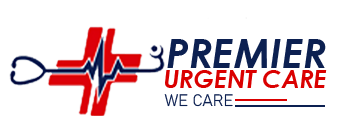
SPINAL CORD STIMULATION

The procedure may be recommended for patients who have:
-
Nerve pain or numbness in the arms or legs
-
Back pain that continues or worsens, even after surgery to correct it
-
Long-term (chronic) back pain, with or without arm or leg pain
-
Swelling (inflammation) of the lining of the brain and spinal cord
SCS is done after other treatments such as medicines and exercise have failed to provide pain relief.
-

Before surgery, patients need to tell their physician what medicines they are taking. These include medicines and supplements bought without a prescription.
A few days before the surgery, patients should:
-
Stop smoking. The recovery will be slower and possibly not as smooth if the patient continues smoking.
-
Stop taking blood thinners. These medications make it harder for the blood to clot. They include aspirin, ibuprofen (Advil, Motrin), and naproxen (Aleve, Naprosyn).
-
Limit alcohol intake.
-
Ask their provider which medicines they should still take on the day of the surgery.
On the day of the surgery, patients should:
-
Avoid eating or drinking anything before the procedure.
-
Take permissible medicines with a small sip of water.
-
Bring their cane, walker, or wheelchair if they have one already.
-
Bring shoes with flat, non-skid soles.
-

The first procedure will involve inserting a trial electrode to see if it helps ease pain.
-
The patient’s skin will be numbed with a local anesthetic.
-
Wires (leads) will be placed under the skin and stretched into the space above the spinal cord.
-
These wires will be connected to a small current generator outside of the body.
The procedure will last about one hour. The patient will be able to go home after the leads are placed.
If the treatment greatly reduces pain, the patient will be offered a permanent generator. The generator will be implanted a few weeks later.
-
The patient will be placed under general anesthesia.
-
The generator will be inserted under the skin of their abdomen or buttocks through a small surgical cut.
-
The procedure will take about 30 to 45 minutes.
-
After the permanent generator is inserted, the physician will close the surgical cut and cover it with a dressing.
The generator runs on batteries. The batteries may be rechargeable or last two to five years. The patient will need another surgery to replace the battery.
-
The patient will be taken to the recovery area where they will wake up from the anesthesia. Staff will show patients how to care for their surgical site. Patients should avoid heavy lifting, bending, and twisting while the wound heals. Light exercise, such as walking, could aid recovery.
Risks of surgery include:
-
Cerebrospinal fluid (CSF) leakage and spinal headaches
-
Nerve damage leading to paralysis, weakness, or pain
-
Infection of the battery or electrode site
-
Movement of or damage to the generator or leads that requires more surgery
-
Problems with the stimulator not working or working improperly
-
Collection of blood or fluid between the covering of the brain (dura) and the surface of the brain
-
Spinal cord stimulation uses a mild electric current to block nerve impulses in the spine and treat pain.
